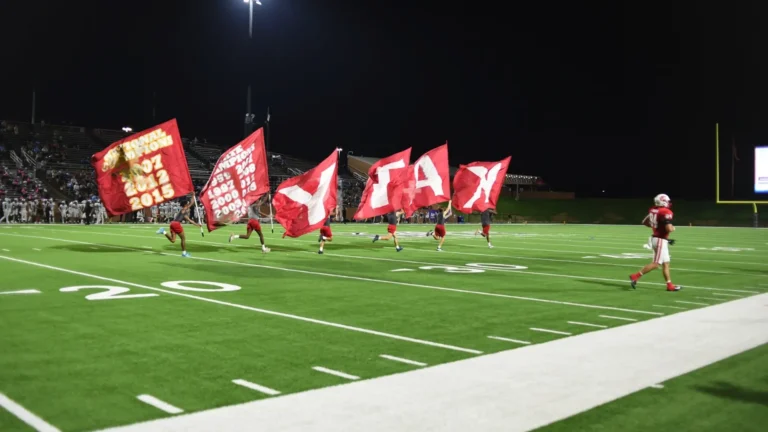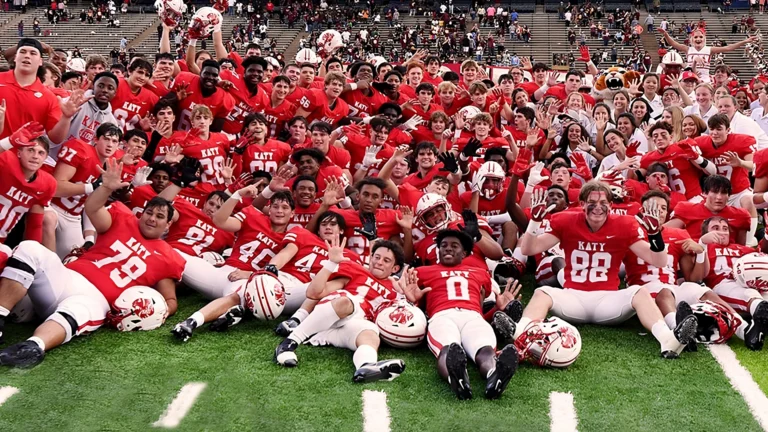It’s the Secret Sauce
I’ve seen some talk on other boards, and answered some of it myself, asking about Katy’s history regarding the quarterback position and why we haven’t gone for more athleticism, or for a more quarterback dependent approach in general like many did after the spread took hold in the early 2000s. This is the story of the Katy Way.
Katy made a calculated decision at some point when Coach Johnston took over to emphasize the feature back within the multiple I base strategy. Katy’s feature backs have been the equivalent of most programs’ quarterbacks in terms of importance. Katy made the decision, and has stuck with it ever since, that producing running backs would be more efficient than grooming “elite” quarterbacks. It’s hard to argue with the results.
At the time Katy made this choice, the triple option and Wing T were the dominant schemes of the time in the mid to later 80s through the mid/late 90s. Odessa Permian, Converse Judson and Plano, the dominant big school programs of the time, all ran some version of those schemes.
The commentary I’ve heard sells Katy’s quarterbacks a bit short in my opinion, and it also largely misses the big picture of Katy’s strategic approach on offense. Katy’s had some very good athletes at QB when you talk about players like Rob Peters, Matt Gore, Jared Kaspar, and Bronson McClelland in particular. The arm talent of guys like Andy Dalton, Bo Levi Mitchell and Brooks Haack doesn’t need much explanation. The overall flexibility of what Katy does offensively allows for different types of running backs and quarterbacks, and the system itself gives us almost unlimited ways to attack a defense. It is only limited by the development of the players and the coaches allowing it to flourish. This is a big part of what has allowed Katy to evolve with each class and create a platform for sustained success.
A Timeless Strategy
This is also why I believe Katy’s commitment to sticking with its strategy is an even better idea today than it was back in the day. Katy zigging while most everyone else zags creates a unique opportunity each season depending on how well each Tiger class develops within the system. Our offense creates a very high degree of potential flexibility depending on what the players are able to execute with reps and chemistry. Crucially, it meshes very well with our defensive strategy.
I can only laugh when folks insinuate Katy’s approach is archaic and that we need to get with the times. The only instance I would agree with that critique is if we become inflexible in how we operate the offense. I’ve called us out a little on this in the past because our best offenses always have had the ability to adapt within a game if necessary and create solutions. This happens by mastering the basics of our scheme and building all of the fun stuff that branches off those things.
The Katy Way actually is perfect for today’s game where most are playing the speed/attacking space game and placing such high emphasis on the quarterback position. It all hinges on the ability to execute the scheme to the fullest extent possible, and that’s the challenge for every class that steps on campus. The ability to dominate the point of attack will never decrease in importance as long as this game is played.
Developing the right positions
Option teams in the past had to be very quarterback heavy in their development, and they generally needed at least 2 or 3 capable QBs to run that position in a season. Spread teams are not much different today in terms of the importance of developing the QB position and having a great pipeline if you plan on sustaining success and not waiting around for lightning in a bottle.
North Shore took a similar approach to Katy on offense from the mid 90s up until about 2008-2009. They were a power I team with some option principles who played with a feature back. Their evolution to the spread began with moving to a shotgun zone read offense during the 2010 season. They stayed in this mode until Dematrius Davis showed up in 2017 and changed the game for them, and now they have Kaleb Bailey continuing where Davis left off. Until Davis, North Shore was never known for gifted passing quarterbacks despite having a couple good ones in Bobby Reid and Willy Gaston in the early 2000s. North Shore had the motivation and the athletic quality to make a significant change as their success was waning in the aftermath of their 2003 state title.
Katy, with a state championship victory and two state semi-finals in the past few seasons, has managed to keep playing at a very high level despite the challenges presented by the rest of the state and within Katy ISD. The Katy Way is very much alive and well, and you have to look beyond the surface level and understand the strategy to understand why this is still true today after all these years.






